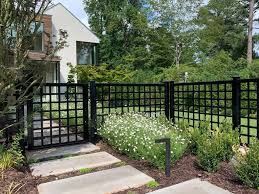Beyond their sensible energy, fences carry serious symbolic relevance in human societies, symbolizing methods of possession, personality, and societal restrictions. As actual physical symptoms of restrictions, fences (ploty) shape our perceptions of place and impact our connections using the constructed surroundings. Let’s check out the much deeper significance behind fences and realise why they can be not only structures—they are signs of man customs and community.
1. Management and Territory:
fences (ploty) signify possession and territorial borders, marking where one house stops and the other commences. By identifying limitations, fences create a sense of ownership and control over territory, strengthening person or combined personal identity. In outlying regions, fences serve as real marker pens of territory management, delineating career fields, pastures, and house facial lines. In downtown configurations, fences demarcate exclusive house from open public room, asserting ownership and exclusivity.
2. Interpersonal Division and Inclusion:
Fences may also symbolize sociable divisions and exclusions within society. High surfaces and obstacles may signify break up and inequality, developing physical limitations that break down neighborhoods according to socio-economic position or another aspects. However, fences with wide open gates and reduced wall surfaces signify inclusivity and relationship, inviting connections and encouraging feelings of community. The design and visibility of fences reveal underlying sociable dynamics and energy components.
3. Societal Personal identity:
In lots of countries, fences hold strong social significance and so are imbued with symbolism that mirrors societal values and traditions. As an example, in a few countries, ornate fences are signs of reputation and status, showcasing prosperity and affluence. On the other hand, in other civilizations, simple and useful fences could be respected with regard to their usefulness and utilitarianism. Learning the societal circumstance of fences helps us appreciate their symbolic value in numerous societies.
4. Mental health Restrictions:
Fences can also represent mental health restrictions that determine private place and autonomy. By developing actual physical limitations, fences supply individuals with a sense of safety and security, permitting them to establish limitations and control use of their private room. This sensation of limit control is important for maintaining emotional well-simply being and social partnerships, mainly because it permits men and women to assert their autonomy and safeguard their individual limitations.
5. Environmental Effect:
The proliferation of fences has environment effects, particularly in natural scenery and animals habitats. Substantial fencing can fragment habitats and affect wild animals corridors, affecting biodiversity and ecosystem health. Even so, eco-warm and friendly fencing alternatives, like wildlife-friendly styles and permeable barriers, offer remedies that balance individual requires with environmental preservation. By decreasing their ecological footprint, fences can bring about the preservation of organic countryside and animals habitats.
To sum up, fences are not only physical structures they can be emblems that symbolize complicated interpersonal, cultural, and emotional dynamics. As guardians of restrictions, fences form human being interaction and panoramas, exhibiting and strengthening social ideals and norms. Admiring the symbolic importance of fences enriches our understanding of the created surroundings and our romantic relationship with all the territory.


